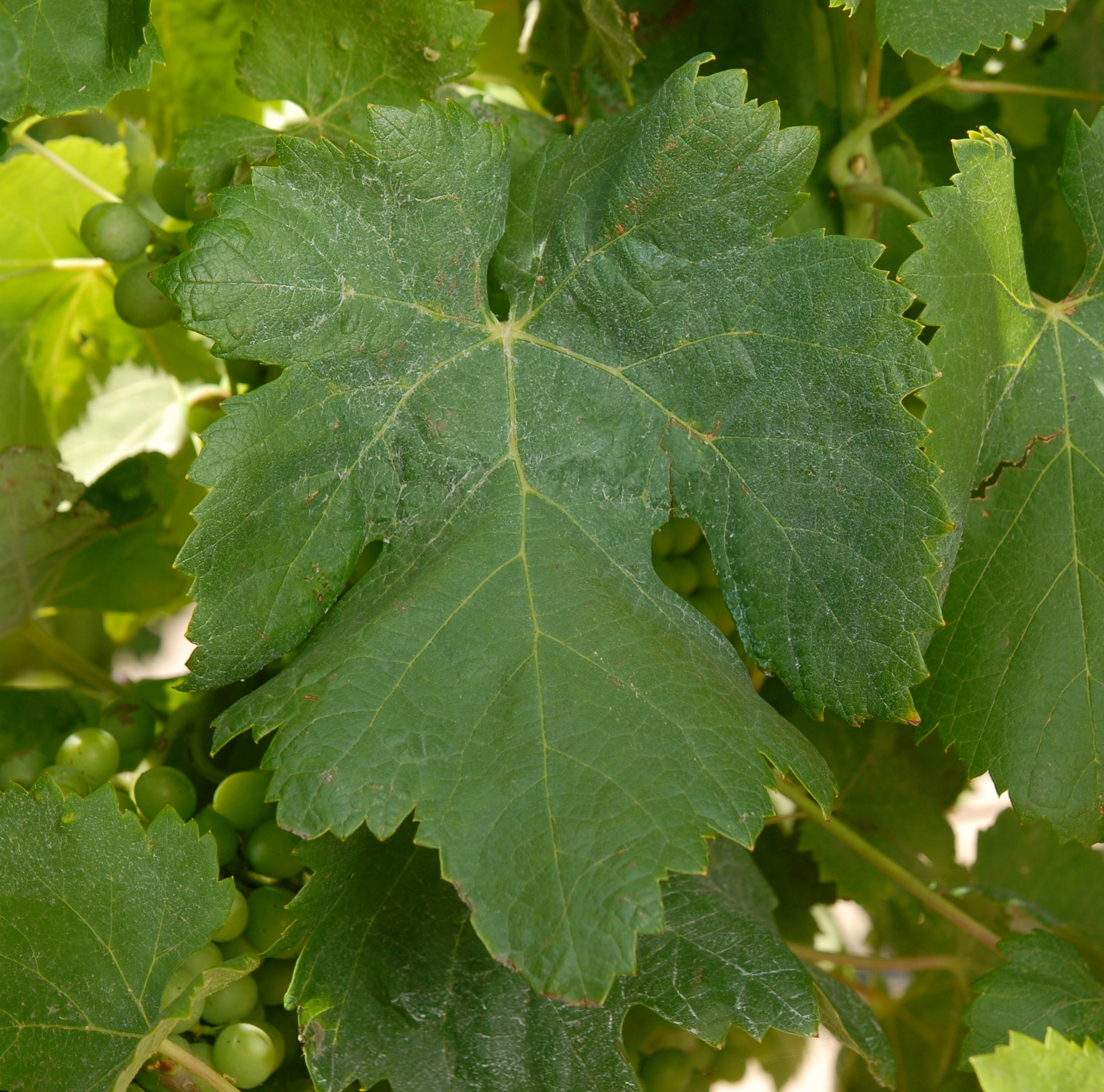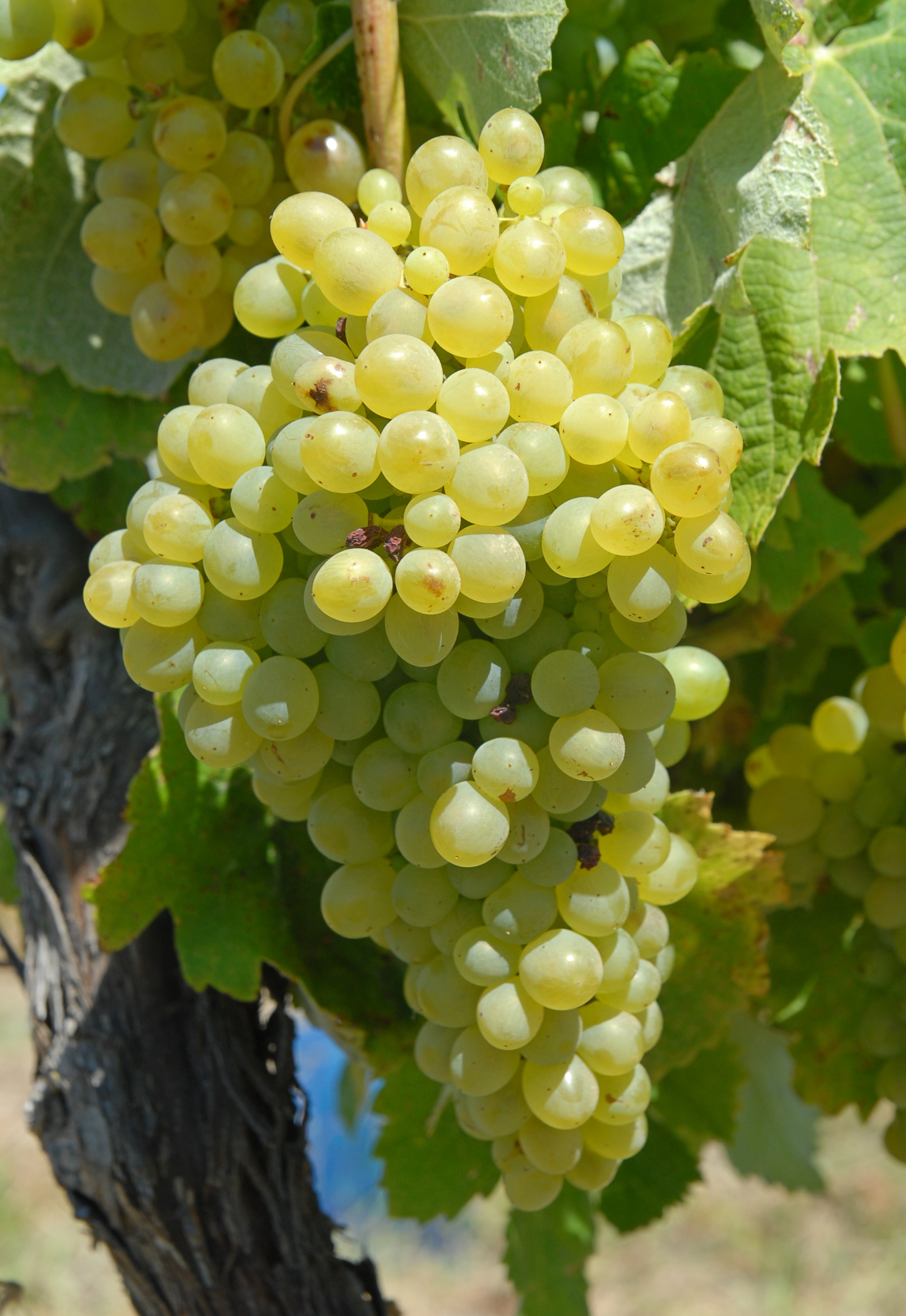Malvasia fina
B
Wine grape variety.
The geographical origin of the variety is specified or, if this is not possible, the area in which it is traditionally cultivated. The genetic origin of the variety is also indicated whenever it is known from hybridiser data or from genetic analyses published or obtained by the teams at INRAE in Montpellier (UMR AGAP) and Vassal-Montpellier Grapevine Biological Resources Centre (CRB-Vigne).
Malvasia fina is a traditional variety from Portugal. Based on genetic analyses carried out in Montpellier, it would result from the crossbreeding of Gibi and Alfrocheiro.
This information indicates the normal and statutory use for the grapes.
Wine grape variety.
Name under which the variety is officially registered in the catalogue of grapevine varieties in France and under which it may be propagated and disseminated.
Malvasia fina
Recognised alternative names that may be used to identify the propagation material of the variety in France or in other member countries of the European Union.
There is no officially recognized synonym in France for this variety. However, it should be pointed out that names based on the term “Malvasia” designate several other distinct varieties in different countries of the European Union (Croatia, Spain, Italy, Portugal, etc.), which should not be confused.
This information indicates on which list the variety is registered (A or B), whether it is classified for wine grapes, and in which member countries of the European Union the variety is also officially registered (for more information, see the "Legislation" menu.
In France, Mavasia fina is officially listed in the "Catalogue of vine varieties" since 2023 on the A list and classified. This variety is also listed on the catalogues of other Member States of the European Union : Cyprus, Spain and Portugal.


Only the principal ampelographic elements enabling the varieties to be characterised and identified are provided. They are presented according to the descriptor code recognised by the International Organisation of Vine and Wine (OIV), the International Union for the Protection of New Varieties of Plants (UPOV), the Community Plant Variety Office (OCVV) and Bioversity International (for more information, see the "Ampelographic glossary" menu). The photographs of leaves and grapes were taken in natural conditions, on the vine, in very similar situations in terms of growing conditions (sandy soil, Mediterranean coast): - Domaine de l'Espiguette (IFV), Le Grau du Roi (Gard), - Domaine de Vassal (INRAE), Marseillan (Hérault), - La Gaillarde Campus (Institut Agro | Montpellier SupAgro), Montpellier (Hérault). Only a few photographs, including the tips of bunches, were taken in other conditions.
- the white tip of the young shoot with a high density of prostrate hairs and a piping distribution of anthocyanin coloration,
- the yellow young leaves, with a high density of prostrate hairs,
- the shoots with green internodes,
- the medium to large, circular or pentagonal adult leaves, with three or five lobes, moderately deep upper lateral sinuses with overlapping lobes, a closed U or V-shaped petiole sinus, medium teeth compared to their width at the base with straight sides, no anthocyanin coloration of veins, a dark green, revolute, twisted, finely blistered and sometimes goffered leaf blade, and on the lower side of the leaves, a low to very low density of erect hairs and a medium density of prostrate hairs,
- the berries that are round or slightly ellipsoid.
Genetic profile
The genetic profile of the variety is provided for the 9 microsatellite markers (or SSR markers) selected under the European programme GrapeGen06 (http://www.eu-vitis.de/index.php) and by the OIV. The absolute size values of the alleles may vary slightly from one laboratory to another, but the relative differences between the two alleles of one single microsatellite are constant. The genetic analyses were conducted by the INRAE Montpellier team (UMR AGAP) and the IFV’s Plant Material Centre.
| Microsatellite | VRZAG62 | VRZAG79 | VVMD25 | VVMD27 | VVMD28 | VVMD32 | VVMD5 | VVMD7 | VVS2 |
|---|---|---|---|---|---|---|---|---|---|
|
Allele 1 |
188 |
248 |
240 |
176 |
233 |
251 |
223 |
239 |
141 |
|
Allele 2 |
188 |
252 |
254 |
191 |
235 |
255 |
238 |
257 |
143 |
The data on suitability are the result of field observations or, if none are available, of bibliography mining and the study of bibliographic references.
Malvasia fina is regularly productive with moderate vigor and a semi-erect bearing.
It is sensitive to water stress (berries shrivelling, defoliation) magnesium deficiency and coulure. However, it is not very susceptible to the wind.
Malvasia fina adapts to all types of pruning, although cordon pruning is recommended. This variety thrives in deep, well-drained soils. When planted in fertile soils, it should be grafted onto rootstocks with moderate vigor.
These remarks are also the result of field observations or, if none are available, of bibliography mining and study of bibliographic references.
Malvasia fina is susceptible to powdery mildew and grey rot. On the other hand, it is less sensitive to downy mildew and vine leafhoppers.
The size of grape clusters and berries indicated are based on the following scales: - Wine grape varieties Size : Very small Bunch (g) : ≤ 100 Berry (g) : 1 - Table grape varieties Bunch (g) : 150 Berry (g) : 2 - Wine grape varieties Size : Small Bunch (g) : 100 - 200 Berry (g) : 1,5 - 2 - Table grape varieties Bunch (g) : 150 - 250 Berry (g) : 2 - 3,5 - Wine grape varieties Size : Moderate Bunch (g) : 200 - 250 Berry (g) : 2 - 2,5 - Table grape varieties Bunch (g) : 250 - 400 Berry (g) : 3,5 - 5,5 - Wine grape varieties Size : Large Bunch (g) : 250 - 400 Berry (g) : 2,5 - 3,5 - Table grape varieties Bunch (g) : 400 - 700 Berry (g) : 5,5 - 8 - Wine grape varieties Size : Very large Bunch (g) : 400 Berry (g) : 3,5 - Table grape varieties Bunch (g) : 700 Berry (g) : 8 Remarks concerning the characteristics of the wines are generally based on tastings organised by juries of professionals.
Malvasia fina bunches are medium to large. The berries are medium-sized, with a simple flavor.
It produces good quality wines, rich in alcohol and with moderate acidity.
but low intensity. In cooler regions, this variety is used to make sparkling wines.
In this section, the list of certified clones is given. Information on clone conservatories is also provided.
There is no certified clone for this variety yet.
The growth stages indicated are the result of obsrvations made at the Domaine de Vassal Estate where the set of these varieties form a collection. The results are indicated compared to the Chasselas vine variety as a reference in order to make comparisons between years and different sites. As such, for information purposes, the dates for the Chasselas B growth stage at Domaine de Vassal are as follows: - Bud burst, 21 March (average over 50 years) - Grape maturity, 14 August (average over 50 years)
Bud burst: 2 days after Chasselas.
Grape maturity: mid-season, 2 weeks to 2 weeks and a half after Chasselas.
Bibliography
- Documentary collections of the Centre de Ressources Biologiques de la Vigne de Vassal-Montpellier, INRAE - Institut Agro Montpellier, Marseillan, France.
- Traité général de viticulture, Ampélographie. P. Viala and V. Vermorel, 1901-1909, Ed. Masson, Paris, France.
- Dictionnaire encyclopédique des cépages et de leurs synonymes. P. Galet, 2015, Ed. Libre&Solidaire, France.
- O grande livro das castas. I. Böhm, 2007, Ed. Chaves Ferreira, Portugal.
- Càtalogo das castas para vinho cultivadas em Portugal. R. Faustino, 2011, Instituto da Vinha e do Vinho, I.P, Portugal.
- Wine Grapes. J. Robinson et al., 2012, Ed. Penguin, England.





